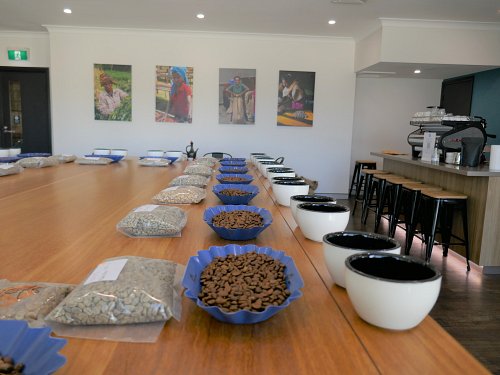SPECIES
COFFEA ARABICA
Without doubt the most popular bean; bright, sweet, complex with lovely acidity and body. Arabica has the most varietals, each developed to adapt the species to local environments. Arabica and Robusta belong to the Rubiacea plant family that have over six thousand genus or sub families.
COFFEA CANEPHORA
Better known as Robusta. Robusta has gained respect through beans like Indian Kaapi Royale, the only Robusta that has earned the SCAA’s ‘Fine Cup’ grading. There’s even a Robusta Q Cupper qualification. We stock a range of Robusta’s from India, Brazil, Mexico, PNG, Tanzania, PNG and Vietnam.
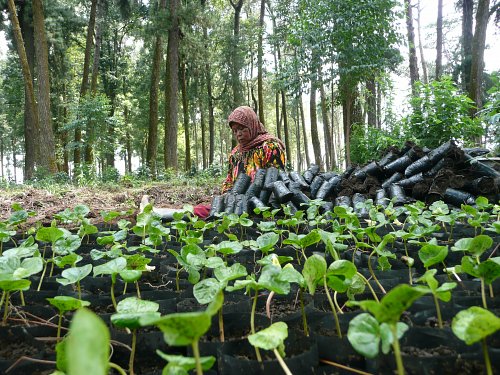
VARIETALS
VARIETALS
Here’s a quick summary of the most popular Arabica’s:
Arusha
Variety of Typica, grown in Tanzania and Papua New Guinea
Blue Mountain
Typica, grown in Jamaica, Papua New Guinea, Hawaii, Kenya and Haiti
Bourbon
Named after an island now known as Reunion. First grown by the French then planted in Brazil. Bourbon is now grown throughout South and Central America.
Caturra
Developed by Brazil in 1937, a natural mutation from a line of Bourbon. High yielding, good branch spread and shorter than Bourbon.
Catuai
Hybrid of Mundo Novo and Caturra, developed by Brazil in the 40’s.
Catimor
Developed by the Portuguese in 1959 from a combination of Timor and Caturra coffee
Harrar, Sidamo, Yirgachaffe
Three Ethiopian varietals named after their respective regions and trademarked by the Ethiopian government
Geisha/Gesha
Named after the village of Gesha, Ethiopia and grown in Boquette, Panama. Also grown in Indonesia. Legend has it that the Gesha in Panama originated in Tanzania.
Maragogype or Maragogipe
A Typica named after a state in Bahia [Brazil] producing large beans.
Mundo Novo
Hybrid between Bourbon and Typica.
Pacamara
Large bean hybrid developed from a Bourbon mutation; Pacas and Maragogype.
Pacas
Natural mutation of Bourbon that occurred in El Salvador
Ruiru 11
Developed in Kenya and released in 1985 for its disease resistance. Initially thought to produce a bland cup, todays hybrids have developed for taste.
S795
Released in the 40’s, cross between Kents and S288 varieties. One of the main varietals in India and South East Asia
Sarchimor
A hybrid between the Costa Rican Villa Sarchi and the Timor variety.
SL28 & SL34
Two popular varietals developed in Kenya. [SL stands for Selection]
Sulawesi Toraja Kalossi
The S795 varietal, grown at high altitudes on the island of Sulawesi
Hybrido de Timor
A hybrid of two species of coffee; Coffea Arabica and Coffea Canephora
Typica
Originating from Yemen plants taken to India and from there to Indonesia. Typica varietals include Kona, Jamaica Blue Mountain and Kents.
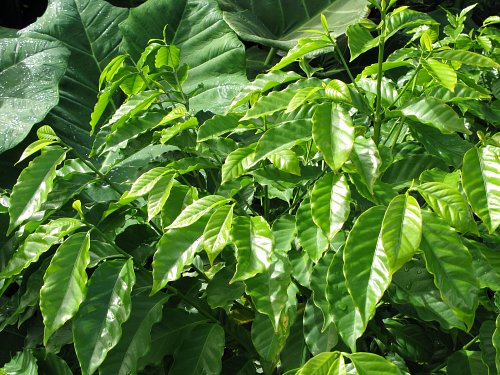
SPECIALTY COFFEE
By strict SCAA definition, this is a coffee scoring 80+ using the Q Grade protocols that have been around for a longtime. It’s well defined and originated to ensure farmers get feedback from a universal system whether the cupper is in Singapore, Sydney or Nairobi. In reality, it’s a word that covers a multitude of meanings to different people.
It’s also one those words open to so many variations and interpretations. For us to grade a coffee as Specialty it has to score 84 or over and stand out flavour is the driver behind the score. Our recommendation is to use scores as a guide only, go by taste.
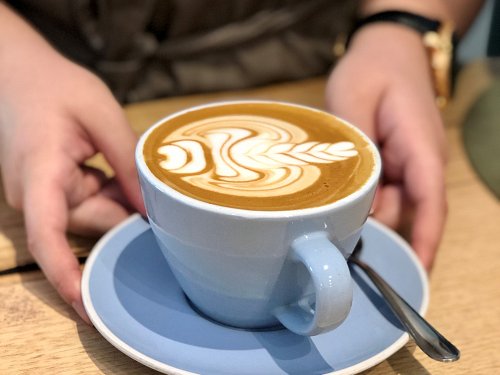
PREMIUM & EXCHANGE GRADE COFFEES
SCAA define coffees that don’t meet Specialty standards as Premium Grade and below Premium is Exchange Grade. Premium Grade coffees can taste great and Exchange Grade coffees can work well in certain blends where price is critical.
Our advice with coffee is always to cup and decide for yourself what is going to work best for your customers. How a coffee beats any score, colourful tasting notes or coffee name. As we said, useful as a guide but taste is everything!
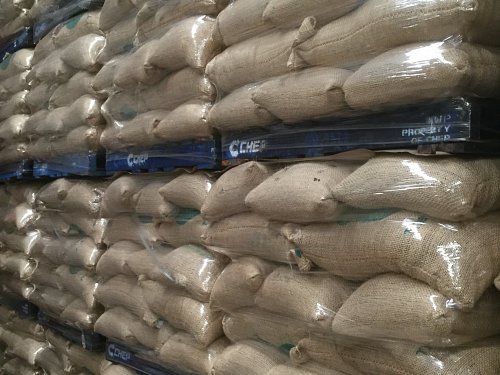
ALTITUDE
The higher the altitude; the denser the bean structure is a general rule. Another factor at the higher altitudes is a slower ripening creating greater flavour and complexity. This, added with the local origin environment plays an essential part in the overall taste of the bean. That said, some low grown Arabica’s produce great flavour and body. Altitude is always shown as MASL - Metres Above Sea Level
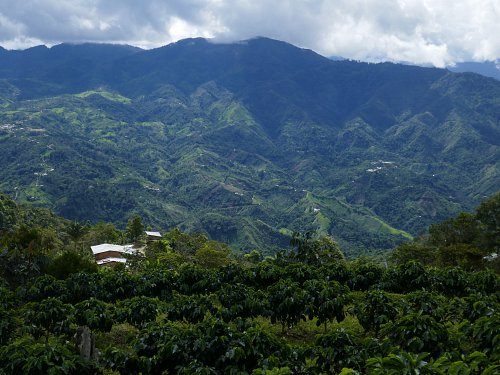
ORIGIN COFFEE GRADES
Explaining each origin's grading would require its own website. Here’s a selection that you’ll see on our coffees-
BRAZIL
As the largest grower there are numerous Brazilian classifications. Here’s the main ones we use:-
SS - Strictly Soft. Best defined as a typical, sweet coffee. As opposed to Hard or Rio like.
NY2/3 – Stands for New York, 2/3 is a grade that allows for 9 defects. Also known as Extra Prime.
GC/FC – Good Cup and Fine Cup; used to describe Strictly Soft Brazilian coffees. Very little difference between the two, classified by the tasters in origin.
Grsh – Green/greenish. Indicates fresh crop.
Grinders – Screen 13 with a set number of defects. Good blending coffee.
MTGB - Medium To Good Bean size, screen size 15 - 16
COLOMBIA
Colombia has set Excelso as the minimum standard for coffees to carry the 100% Colombian Coffee logo as a guarantee of origin and quality. What this means is that coffee bags will be marked as Excelso [Screen size 14 up] indicating it has met the required quality standard on one side but on the other side could be marked Supremo [Screen size 17]
EP – European Preparation. Means that green beans are hand sorted prior to export.
COSTA RICA
HB – Hard Bean, grown at 800 – 1100 MASL [Metres above sea level]
HGA – High Grown Atlantic. Grown at 900 – 1200 MASL
SHB – Strictly Hard Bean. Grown at 1200 – 1650 MASL. Usually coffees from Central Valley and Tarazzu
ETHIOPIA
UG – UG, or Ungraded, refers to coffee beans that have not gone through the formal grading process or may not meet the criteria for higher-grade classifications.
GUATEMALA
SHB - Strictly Hard Bean. Between 1600 – 1700 MASL
EP – European Preparation. Screen 15 Plus with low defect count
HONDURAS
HG – High Grown, grown at 1000 – 1500 MASL
SHG – Strictly High Grown, grown at 1500 – 2000 MASL
EP – European Preparation. Screen 15 Plus with low defect count
INDONESIA
TP – Triple Pass. Coffee that has been hand sorted three times.
WIB – West Indische Bereiding old Dutch term that refers to the better standard of preparation. Applies to Robusta.
AP – this has numerous meanings but essentially means the coffee has been dry processed. Applies to Robusta.
INDIA
MNEB – Mysore Nuggets Extra Bold, top grade Indian coffee
PLT – Plantation, Premium grade washed coffees.
A Grade – Screen 17
B Grade – Screen 15
Cherry – Naturally processed Arabica/Robusta
KENYA
AA Grade – Screen Size 17 & 18
AB Grade – Screen Size 15 & 16
FAQ – Fair Average Quality, Normally screen sizes 17 and 18.
MEXICO
HG – High Grown, Up to 1600 MASL. Known as Altura
EP – European Preparation. Strict sorting
NICARAGUA
SHG – Strictly High Grown – grown at 1200 MASL and above
EP – European Preparation; strict sorting with a Screen Size of 15+
PERU
MCM – Machine Cleaned Mejorado. Strict machine sorting and grading for export
HB – Hard Bean, normally from 750 – 1900+ MASL
PAPUA NEW GUINEA
PNG launched new standards in 2021 to streamline classifications
A Grade – Blueish green beans. 10 defects per 1kg
X Grade – Even, green to bluish. 30 defects per 1kg
Y Grade – Pale green to green. 70 defects per 1kg
Y2 Grade – Mixed light green to green. 150 defects per 1kg
Y3 Grade – Mixed bean colours, 30% defects by weight
Still being used are a C Grade, usually between an X and Y1. Some coffees are also still marked as PSC, standing for Premium Smallholder Coffee. Normally indicative of a good coffee.
EL SALVADOR
SHG – Strictly High Grown. 1200 MASL
TANZANIA
AA Grade – Screen Size 18
AB Grade – Screen Sizes 15.5 – 18
UGANDA
AA Grade – Screen Size 17 [90%]
AB Grade – Screen 16 [60%] Up
Bugisu – Washed Arabica grown in Eastern Uganda
Drugar – Dried Ugandan Arabica – Naturally processed
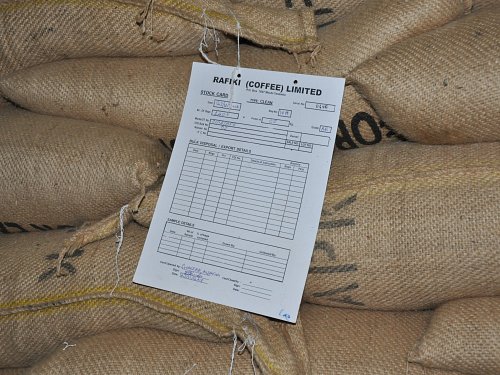
WASHED PROCESS
The Washed [or Wet] Process is where coffee cherries have the skin removed in a de-pulping machine ideally within 12 hours of picking. The coffee beans are then put in open concrete tanks of water where a natural fermentation process removes the remaining fruit residue. This process takes from 12 – 48 hours. By this stage, the beans, still covered in their parchment skin, are taken to be dried.
This process requires access to fresh water as the tanks have to be refreshed with clean water after 3 – 4 cycles otherwise tainting can occur. Most origins now divert the used water to drying pans where the water evaporates and the remaining sludge is dried and used as a fertiliser. Previously, the enzyme rich water was released back into rivers causing extensive pollution. Many mills will also make the dried cherry skins available to farmers for mulch.
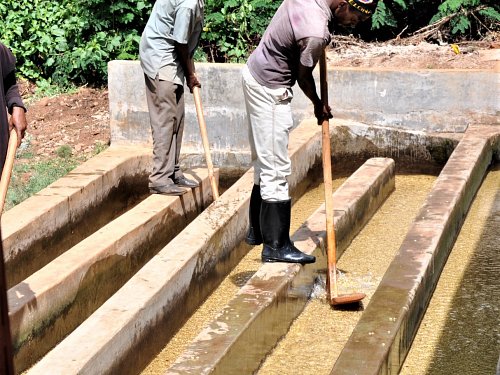
SEMI-WASHED
Also known as Pulped Natural. Cherries are hulled and the beans then dried in the sun. Much the same as natural coffees, sugars are absorbed into the beans from the remaining fruit on the bean. There are number of variations of semi washed, the most popular being Honey process.
HONEY PROCESS
Much the same as semi washed, cherries are pulped then sun dried with as much mucilage or fruit remaining on the bean. As beans dry in the sun, the mucilage darkens. There are a number of variations such as Black Honey, Red Honey, Black Honey, Yellow Honey, 30% Honey and 40% Honey. Most depend on the time taken to dry and exposure to sun. A coffee processed this way will have a lovely, bright sweetness to it created by the sugars being absorbed from the mucilage into the bean.
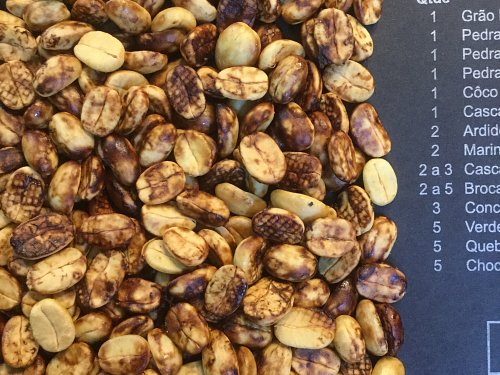
DRY OR NATURAL PROCESSING
This is where the coffee cherry is dried whole in the sun. As the cherry dries, all the sugars and other properties from the fruit or mucilage are absorbed into the bean. Natural coffees have a distinct sweetness and fruit notes, great examples are Ethiopian Sidamo Guji beans. Drying beans need to be raked regularly to ensure even drying and covered or collected if it rains. Best naturals are dried on clean concrete patios or raised beds to avoid earthy taints/mustiness.
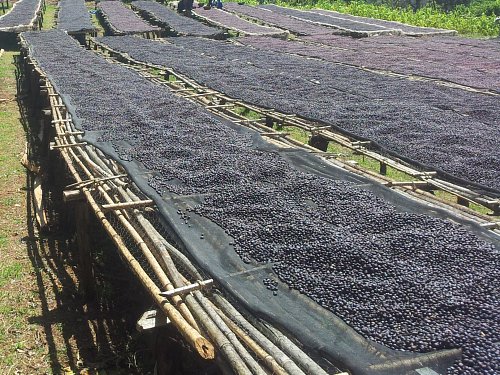
PEABERRIES
These are where only a single bean is found in a cherry. All the nutrients and properties that develop the taste characteristics are developed in one bean instead of two. Every coffee tree produces a percentage of peaberries, there is no specific peaberry tree. For a long time, peaberries were discarded as defects before sorting equipment could separate them out by weight or density. The Kenyan coffee industry were the first to market peaberries in their own right and gave them their name!
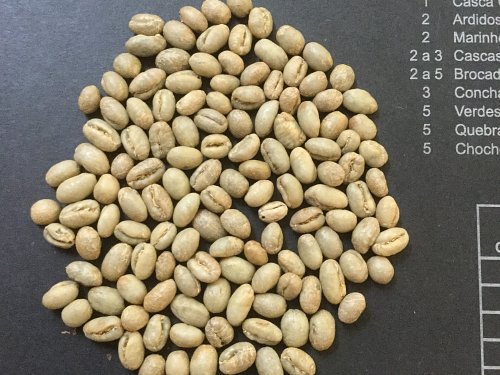
SCREEN SIZE
All green coffee is bought with a screen size reference. This is a process where a set amount [we use 300g] of green coffee is passed through a series of interlocking trays placed one on top of the other. The largest screen size [19] is on the top, smallest size [13] on the bottom. The screens are shaken vigorously by hand and beans are either retained by the screens or fall through the various screens. Retained beans in each tray counted and a percentage can be worked out of each different screen.
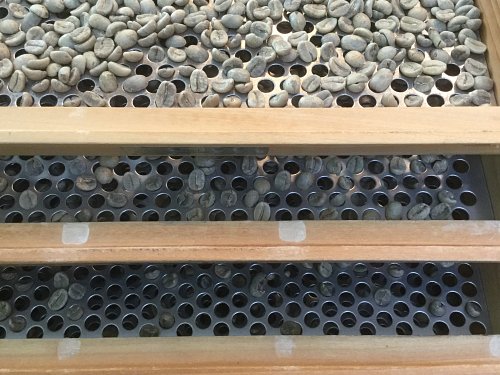
MOISTURE LEVEL
Acceptable moisture levels in beans range from 9% to 13%. Below 9% may indicate the previous year’s crop and affect roasting times. Over 13% and the crop may have not been dried correctly and released for export too soon.
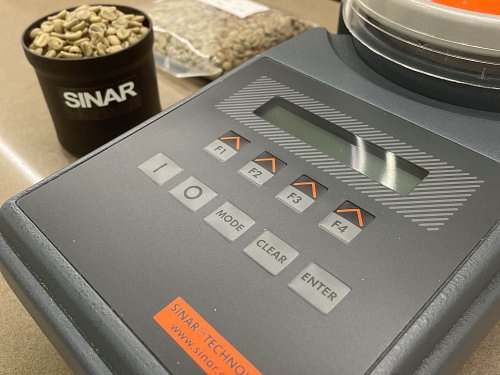
DEFECTS
Most defined coffee standards allow a certain number of defects; broken beans, insect damage, quakers [under ripe beans] brown beans and the infamous stinker or black bean. Add to this tiny stones, sticks, dried cherries all of which can affect taste or damage a grinder. Removal of defects happens at origin through sorting equipment or by hand. Best guide on defects is the SCAA Defect Handbook with clear explanations and pictures.
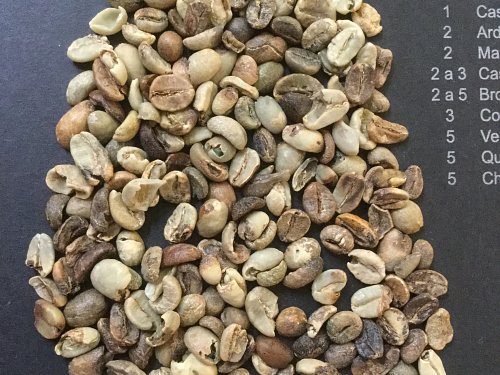
WET MILL
Where farmers bring picked cherries immediately after harvesting for processing predominantly as washed coffee. The cherries are run through water where underdeveloped beans that float are skimmed off. The outer skin is taken off and the beans are soaked in water where a natural fermentation removes the fruit. [Mucilage] Final stage is where beans are sundried on patios or on raised drying beds.
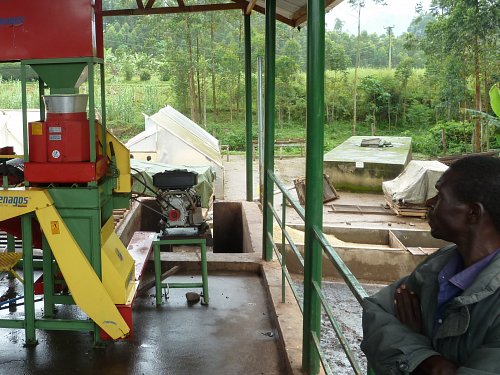
MECHANICALLY DRIED
Used by a number of plantations in conjunction with the beans being sun-dried or where the humidity is too high. Driers are often fired by dried cherry skins/parchment. Driers are often used to complete the drying cycle and bring the beans to a very specific moisture level.
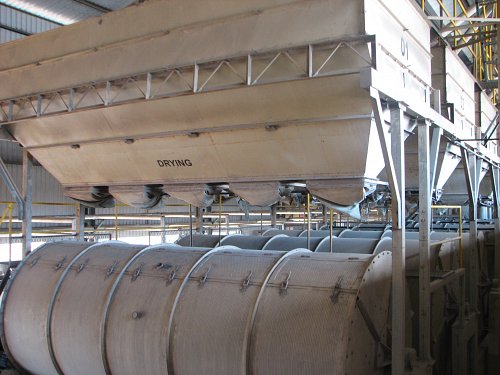
SOIL
Volcanic soils are coffee’s ideal growing environment. Also known as Andisols, volcanic soil is mineral rich and plays a critical part in providing the plant with essential potassium, nitrogen and phosphorous. Type and ph levels in the soils will also have a direct bearing on taste, high acid soils produce coffees with noticeable acidity. Best example of this are Kenyan coffees.
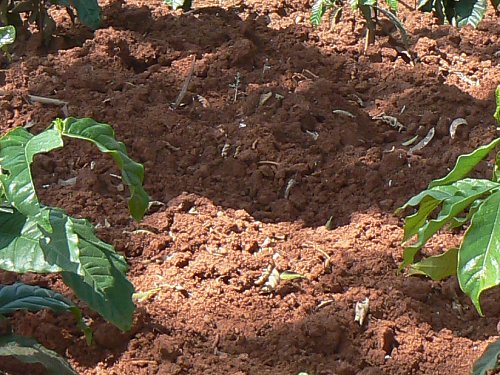
GRAINPRO®, ECOTACT, PENTABAG® & KLABIN BAGS
GrainPro® and Ecotact® are specially developed liner bags that protect coffee from moisture and humidity, preserving the flavours of the coffee. Penta Bags® were developed by Daterra Coffee in Brazil and used on a number of their coffees. Monte Alegre Estate are now using Klabin recyclable paper bags that also protect against moisture and humidity.
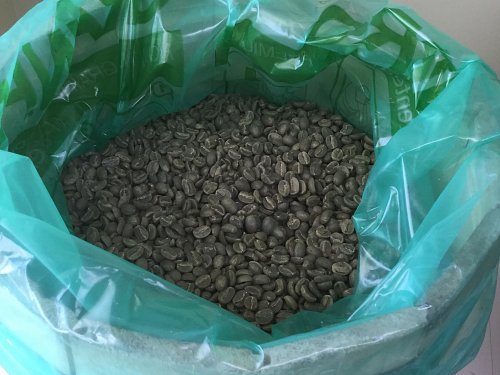
CUPPING
There are very defined SCAA standards for cupping but most roasters or green bean professionals will have their own personal methodology. What is important is that it’s the same method every time you cup. Here’s our method:
100g of green beans are roasted for four minutes to remove moisture, cooled, then roasted to just on first crack
Filter grind – on the coarse side and weighed out to 20g
220ml of 97ºC water added and left for 4 minutes before the crust of floating grounds bloom is broken, stirred and allowed to settle.
When coffee is around 60ºC, we cup. At this point we are simply tasting for defects like mustiness, phenol or other taints. Once cooled, we cup for flavour descriptors
Our descriptors are short and to the point; we avoid over describing. Quite often we will go back an hour later to re-cup if there has been a minor variation in what we were expecting.
All the time the coffee is being evaluated: as its being ground, once in the cup, after the crust has formed, when it’s broken. Every stage tells its own little story.
And spoons? We use the same spoon every time we cup, one with deep bowl and comfortable handle. Have your own spoon so every time you cup, there’s a consistency factor.
One of the hardest thing about starting cupping is identifying flavours, especially if you’ve had a session with experienced cuppers. Descriptors roll off their tongue; buttery, ripe red berries, tropical fruits, cocoa, spice etc. Then when its your turn, all there is a very intense taste of coffee!
Don’t stress! The experienced cupper isn’t literally tasting ripe red berries, it’s a flavour that reminds them of ripe red berries. There’s a big difference between those two highlighted words! What the cupper has done is reached back into their memory for things they’ve eaten, drunk or smelt that they associate with what’s just been tasted. To them it might be berries, to you it might be raspberry jelly – it’s incredibly subjective and personal. Cupping takes time to build up a library of different taste memories, the distinct characteristics of the main origins and the wonderful nuances different producers create. It’s an immensely interesting journey!
One useful everyday exercise is to try and describe to yourself tastes or smells while you’re eating, drinking or cooking - the smell of cinnamon, fresh baked bread or the scent of a tomato plant when you brush by it. [We thoroughly recommend reading A Cuppers Handbook by Ted Lingle – still the best guide to tasting coffee]
